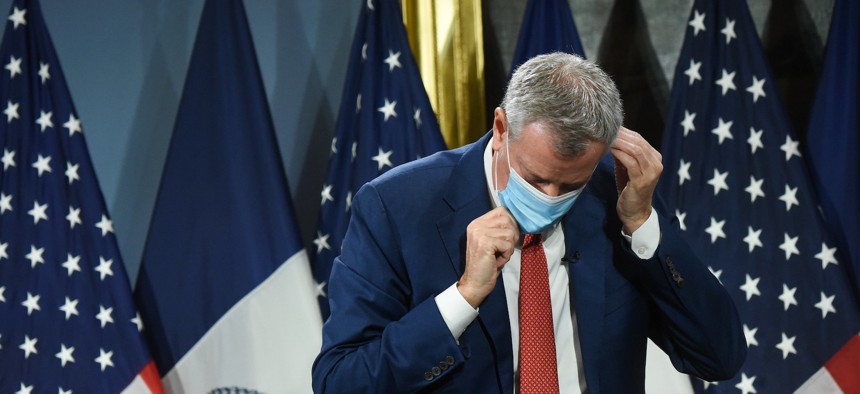With the abrupt closure of New York City public schools yesterday, one question seems to be asked more than any other: Could it have been avoided?
The Wall Street Journal reported Thursday night that New York City Mayor Bill de Blasio rejected a proposal from Gov. Andrew Cuomo’s office that might have averted a shutdown for another few weeks. But even that offer wouldn’t have given the city a permanent solution to keep schools open.
On Wednesday morning, city officials told de Blasio that, according to the city’s data, New York City’s positive COVID-19 test rate over a seven-day rolling average was at exactly 3% – the threshold that the city decided in September would trigger the closure of schools. Having crossed that threshold, a closure seemed inevitable.
But the Journal reports that state officials tried to get de Blasio to adopt the state’s coronavirus method for calculating the positivity rate, which differs from the city’s and on Wednesday reflected a positive COVID-19 rate of just 2.5% for New York City, slightly below the closing threshold. (The city and state use different methods for calculating positive case rates. The state calculates the positivity rate based on all the test results that were reported the previous day, while the city calculates the rate based on the day that tests were performed.)
De Blasio declined to adopt the state’s method, reportedly arguing that the city’s method for determining the positivity rate was more accurate. But even if he had agreed to go along with the state’s numbers, it likely would have only bought de Blasio a few weeks, as the state’s calculation of the positivity rate in New York City could cross 3% soon too.
Ultimately, it’s the reliance on the 3% threshold in the first place – a rate that some, including Cuomo, have called conservative – that backed New York City into the closure. That rate was decided on by de Blasio this summer, as the city’s teachers union put pressure on the city to come up with conservative measures for a safe reopening.
Theoretically, de Blasio could have revised that metric for closing, but he’s been adamant that the city will stick to the guidelines it set months ago, saying that the city had locked into a “social contract” over the matter. “The 3% decision was made with our health care leadership before school started, and of course with our education leadership out of both abundance of caution and a belief that we needed a social contract with our parents, with our educators, with our staff, that we need to show we meant so much business in terms of opening school safely, that we would stake our claim at a level lower than anybody,” de Blasio said last week.
NEXT STORY: What we still don’t know about school closures


